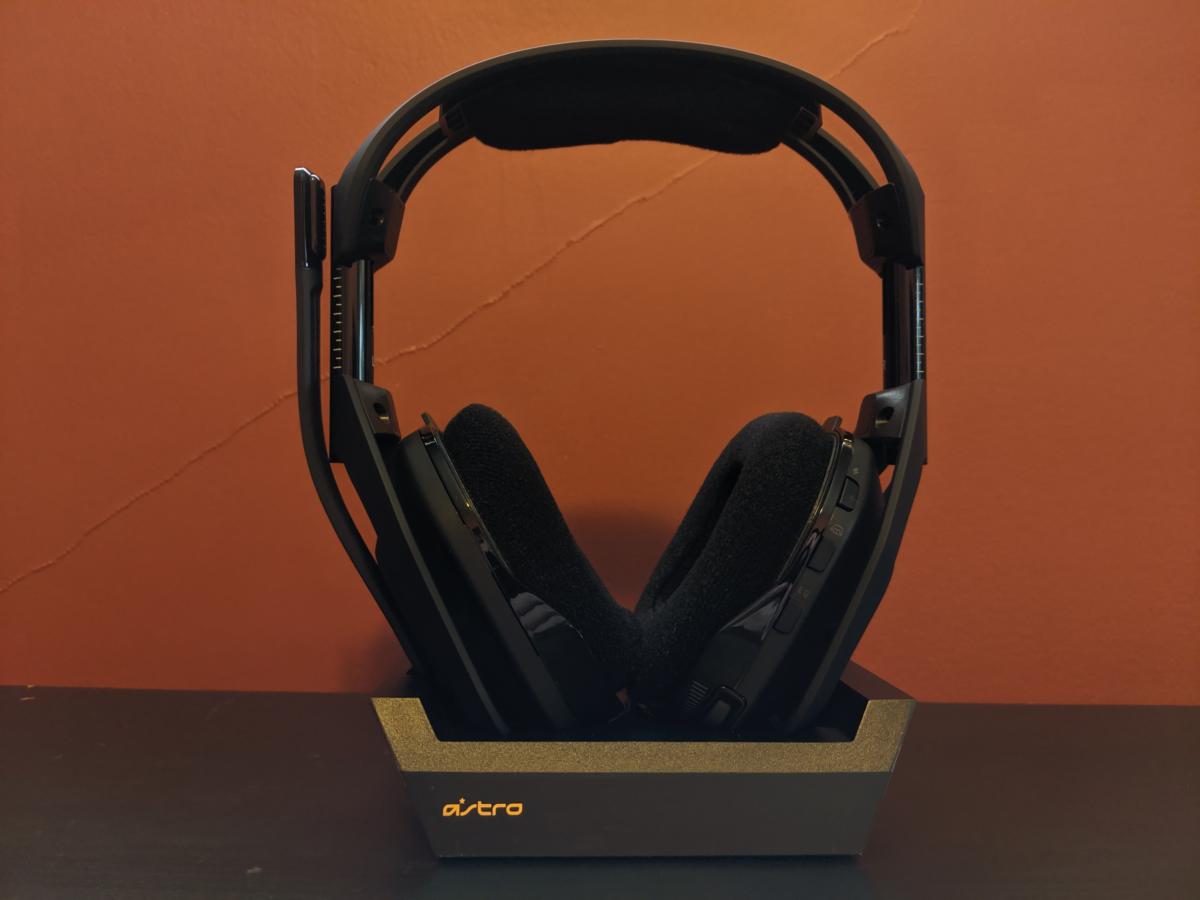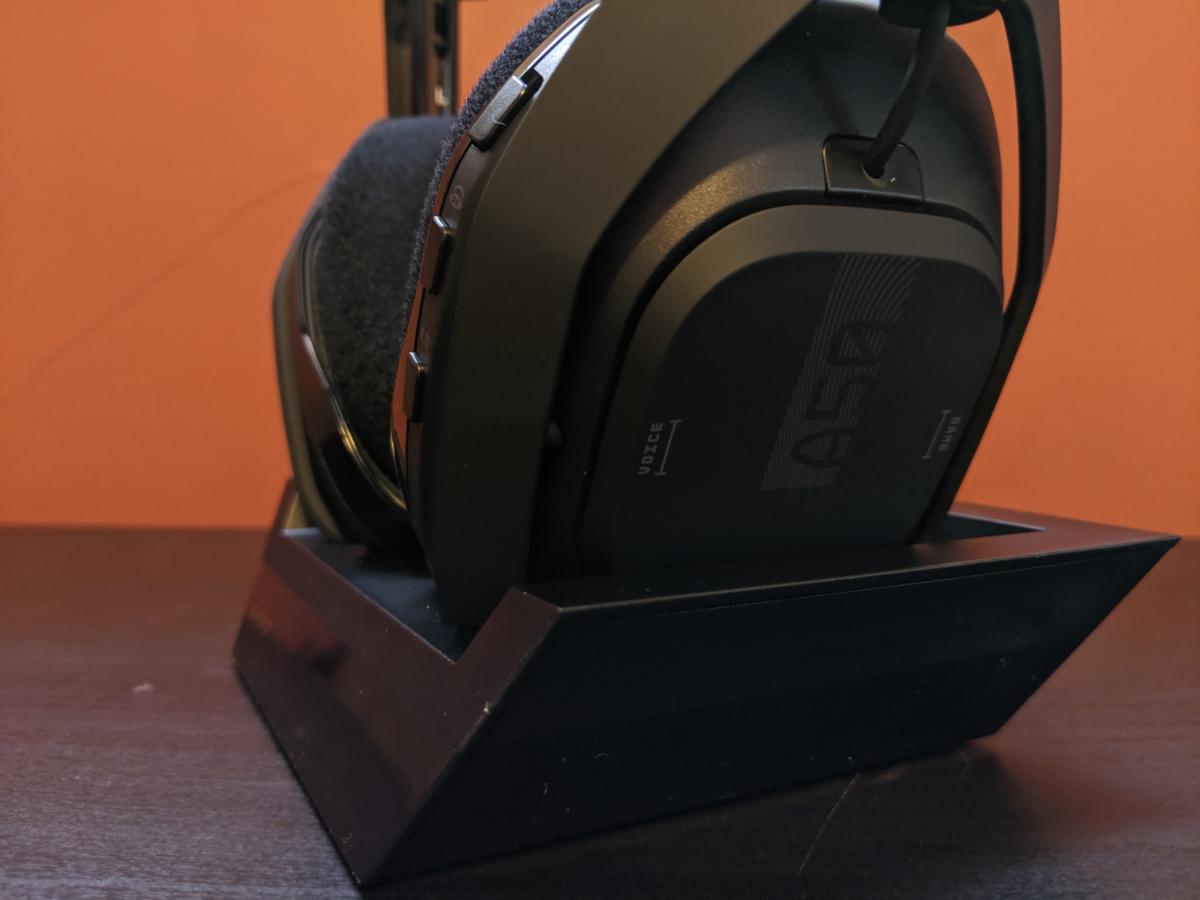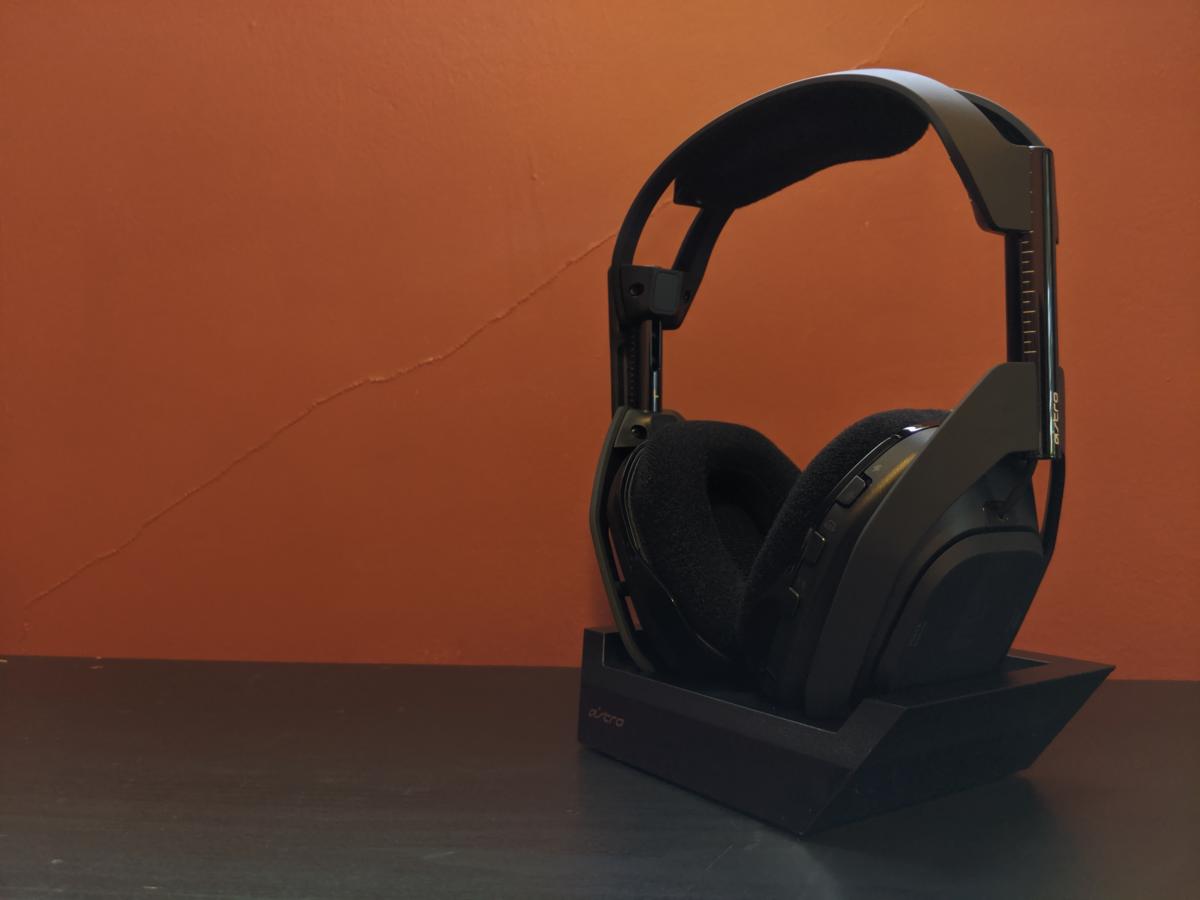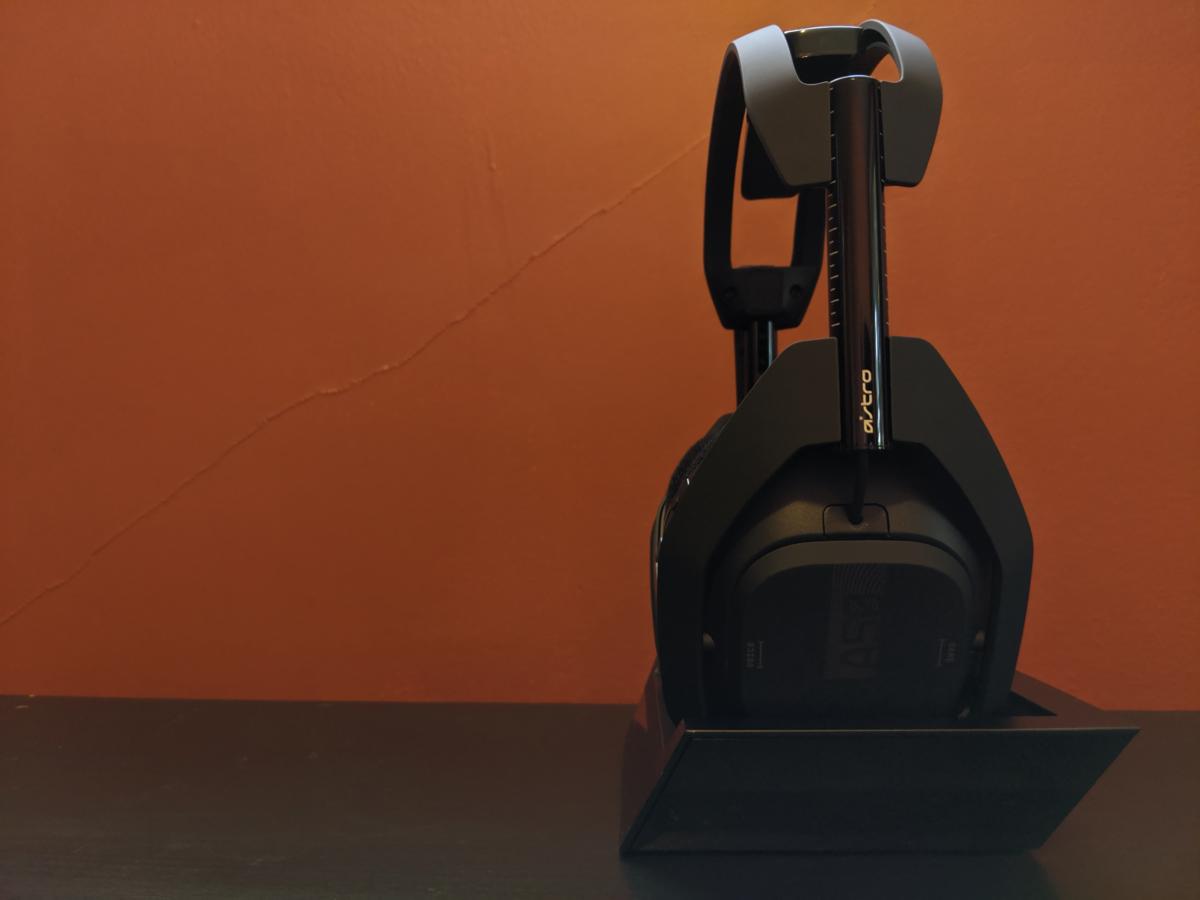Astro A50 (2019) review: Convenience costs money - mangummuccalto
Past calendar month we took a look at Astro's A40 TR, the latest redesign of its venerable wired headset. And that can only awful unrivaled thing: A redesigned A50, nigh connected its heels. Astro's flagship and its most expensive offering, the A50 was in one case probably the about capable radio receiver headset on the market.
Does that hold sure in 2019, though? Can the A50 possibly justify its increasingly conspicuous $300 price point? As with the A40, Astro's got an acclivitous battle—though I think the A50 comes a sin of a lot nigher.
On a pedestal
Like the A40, the core design of the A50 is essentially identical to what we saw back in 2016—and in 2014, and in 2012.
Every bit I said when reviewing the A40, why not? The A50, like its pumped up sibling, is iconic. Astro's rugged industrial aesthetic would seem dated if it debuted in 2019, but it didn't. Information technology's a decade old, and information technology's unmatched of the some headset designs I'd say is instantly recognizable, peculiarly given its widespread use in tournaments and by YouTube and Twitch personalities. Astro's great at seeding its headsets.
 IDG / Hayden Dingman
IDG / Hayden Dingman Soh steady, I'd love to see Astro's take connected a sleeker headset, a la Logitech's G533. Merely I can hardly blame them for jutting to the familiar when information technology's built such lettre de cachet already. It's a advantageous design, equal parts comfortable and durable. Even with minimal tweaking, information technology still outdoes almost of the competition in those respects.
And it's worth noting that, however minimal they may seem, Astro has tweaked few elements of the A50 headset. That's more I could say for the A40 TR.
Outset and foremost, the colours are much restrained this clip. That's slightly meaningless, as Astro prides itself on providing options for personalization—even hinting that an A50 equivalent of its new A40 Astro.ID program isn't out of the question. In a couple of years, we power all have technicolor A50s that match our innermost desires.
For launch though, Astro's gone with…black-and-white (with a equal of chromatic). Oil production? Safe? Possibly, but the last generation of A50s launched in bluing-and-silver for the PlayStation 4 and PC, gray-haired-and-green for the Xbox United. If you didn't care it—and I didn't—you were KO'd of luck. Clothed is electroneutral. Total darkness is inoffensive. And negroid is, for better operating theatre worse, many "premium" spirit than the toylike colorways of the last set. When you're selling a $300 headset, that's important.
 IDG / Hayden Dingman
IDG / Hayden Dingman Astro also redesigned the A50's onboard controls slightly. The old A50 used a slippery switch to change among troika Equivalent profiles. The raw model replaces the skidder with a button, which makes it moderately embarrassing to think back which push toggles surround level-headed and which changes EQ.
You won't deman those buttons often though, and otherwise the A50's controls rest top in class. The volume wheel is pleasing to find at the bottommost-rear of the right earcup, and the veneer edge's Chat/Game channel mixer is still unmatched.
If you seaport't used an A50 before, it integrates cardinal assort audio channels—one for game audio frequency, the other ostensibly for chat programs, allowing you to adjust the prevalence and volume of each independently. Along the tense A40, this is done by way of a massive dial on the standalone MixAmp module. With the Astro A50, you rock musi the side of the right earcup forward for more Game audio, back for more Chat. Audio cues let you know when you have a 50/50 mixing, operating theatre when you've maxed out either channel.
There are other headsets out at that place that support deuce input channels, but most enable ensure with another wheel. In those cases I inevitably end up confused which wheel is for volume and which for Old World chat-mix. Having two different mechanisms is a relief.
 IDG / Hayden Dingman
IDG / Hayden Dingman And last but unquestionably not least, Astro's moved the A50 to the 2.4GHz wireless band. You South Korean won't necessarily notice that change at plate, but you'll appreciate it. The over-the-hill Astro A50 worked happening the 5GHz band, which from the start had problems with signal crop and penetration in my San Francisco apartment building. Interference has only gotten worse over the past few years as 5GHz proliferated. The change to the to a greater extent time-tested (and cleaner, at the least around here) 2.4GHz band is a boon.
Sufficient nigh the headset, though. Most of Astro's mold went into redesigning the accessories, same as the A40 TR and its spiffed up MixAmp.
The 2016 iteration of the Astro A50 introduced the charging stand, a current model for keeping a wireless headset topped up—and one I still haven't seen copied. Keeping tune peripherals charged is the main hassle preventing borrowing, so Astro had a nifty idea: Take off the friction. Make water information technology so the place you store the A50 is the same place you charge the A50. Nary need to remember to jade it in at night, no additional cables. Equitable set it in a custom cradle and great power will flow.
It was impressive, but like any best-generation hardware there were some flaws. The old provenience was large, with of import unused quad. Despite that, it only liked to hold the Astro A50 when the headset was compressed to its smallest size, meaning larger heads required to readapt the earcups for every usage.
The unaccustomed cradle is littler, tucked underneath the edges of the headset. Information technology's a a lot cleaner design, despite providing fundamentally the same service.
 IDG / Hayden Dingman
IDG / Hayden Dingman The built-in display is more illuminating as well. The aforesaid change from an Equivalent slider to a button is slaked somewhat by the fact that your selected profile now displays on the charging stand as either 1, 2, or 3. (You'll also hear an audio cue when switching among them.) Dolby and stereo modes are also displayed, the first with the standard Ray M. Dolby palisade logo, the last mentioned with a hotshot.
More significantly, it's easier to get the Astro A50 into the damn charging dock—even when the headset is extended to its full size. None more awkward fumbling for contact. You send packing the A50 into the stand, and nine multiplication out of ten it lands firmly and starts charging. The lone LED on the A50 turns yellow, and an eye-catching animation on the display acts as secondary confirmation if you need it.
That's good because the Astro A50's bombardment living International Relations and Security Network't very staggering by 2019 standards. Fifteen hours will get you through the day, but maybe non multiple years. I'm some better nigh charging the A50 though, thanks to the dock. In fact, aside from running it John L. H. Down on purpose once for testing, I've never seen information technology fall below the halfway point.
You can stretch that 15 hours pretty far thanks to the internal gyros. If the Astro A50 is stationary for 30 seconds—for representative, if you lay information technology down on your desk—it automatically powers down to preserve the battery. That's every well and good, but the proper coup is that when you plectron the A50 back up, IT senses apparent movement and powers back on ahead IT's even reached your ears. IT's a feature I expected everyone to re-create, and yet to this Clarence Day I've never seen some other headset duplicate it.
These features, impertinent though they may be, are the reason you'd spend $300 on the A50s. Astro's au fond made an argumentation for the A50's price tag that doesn't solely rest on the quality of the headset itself, which is smart.
 IDG / Hayden Dingman
IDG / Hayden Dingman That's not to say the Astro A50 sounds bad. On the reverse, these retuned A50s levelheaded healthier than e'er. They're affectionate and punchy, with a prominent mid-range that sounds cracking in both music and games. Comparable whol Astro's headsets, the high-end tends to recede a bit more than it should, with cymbals disappearing into the combine. Isolation could use improvement as well. There's a set of wreathe chimes in a neighboring backyard that's still really audible using the A50s, but I barely notice them when wearing other headsets. If you're in a reedy environment, these North Korean won't do.
But for the nearly part, the Astro A50s sound great. Not up to par with $300 audiophile headphones necessarily, but sure enough competitive with the best wireless play headsets.
Problem is, most of Astro's competition is in the $150 range these days. Thus Astro's tactic of value-add features seems smart. It's hard to justify a $300 headset when you can get the aforementioned fidelity from something corresponding the Logitech G533 for incomplete the cost. What you North Korean won't get though? Astro's charging dock, the intrinsical gyros, chat-mix—and hey, nonpareil hell of a microphone while we're at it. Those elements upgrade the A50 in a higher place the competition in a sense the audio frequency unequaled could ne'er achieve.
Bottom line
Whether it's adequate to justify the price? I'm not sure. Astro's ready-made a compelling controversy, and the A50's still a favorite headset of mine. But it's harder than ever to deal out citizenry on "Greatest" when you tin flummox "Great" for half the price.
Then once more, once you've used an Astro A50 for any probative amount of time it's hard to come back to other wireless headsets. Whenever I do, I annoy myself when I forgot to point a headset overnight, or plaint the lack of confabulate-mix. So what are you really paying for with the Astro A50? Convenience, more than anything.
Source: https://www.pcworld.com/article/398101/astro-a50-2019-review-convenience-costs-money.html
Posted by: mangummuccalto.blogspot.com


0 Response to "Astro A50 (2019) review: Convenience costs money - mangummuccalto"
Post a Comment